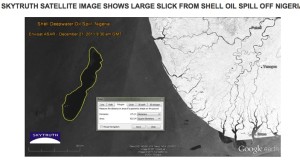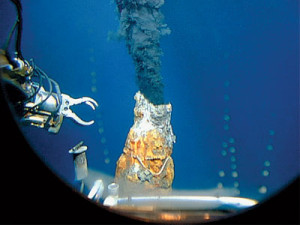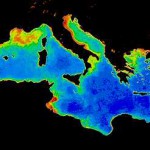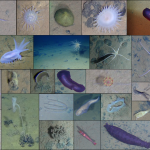
On May 20th, 2010–one month to the day after the Deepwater Horizon oil rig (under lease by British Petroleum) exploded and caught fire in the Gulf of Mexico, beginning what would become the largest accidental marine oil spill in the history of the petroleum industry–the U.S. government and numerous environmental organizations accused BP of falling short in the information it had provided about the spill. While oil literally gushed from the Macondo blowout, information on what was happening beneath the water surface was not so free-flowing. Allegations were made that BP had engaged in a “cover-up” about the extent of the damage and the amount of crude flowing unchecked from its ruptured well at a water depth of approximately 5,000 feet (1,500 m).
U.S. Representative Edward Markey (D, Massachusetts) was one of the most vociferous critics in calling bullshit on the lack of information,
“BP has stonewalled on releasing the video [of the submerged blowout site] for 23 days. … If you look at the video you can see plumes of oil spilling into the Gulf far in excess of 5,000 barrels per day.”
It wasn’t simply questions and concerns about the rate and volume of oil gushing from the drill site that were being unanswered. Of equal import was the extent to which BP was employing dispersants at the Macondo well which carried their own environmental hazards. But with the blowout nearly one mile below the ocean surface, and with readily available (and suitable) submersible technology primarily owned and operated by petroleum interests, the need for independent verification and monitoring of BP was simply not a reality. BP effectively limited real time information which ultimately stalled independent assessments of the true severity of the disaster. The U.S. government, international media, and the public operated in a data deficient environment manufactured by the petroleum industry.
But I think that James Cameron’s historic Deep Challenger submersible descent last Sunday into the Marianas Trench could signal a new era of independent deep sea surveillance and oversight.
I won’t rehash how important Cameron’s trip to maximum ocean depth was to the ocean science and exploration communities (DSN’s Captain Craig and Quartermaster of Ales Dr Dove made their compelling case earlier this week.) There’s certainly a lot that we COULD learn from even a small sediment sample from Challenger Deep (as DSN Chief Purser of Purses Dr Bik explained so beautifully.) But a lot of the reasons why we DON’T know as much as we’d like to know is because the deep sea is such an inhospitable place for human exploration (again, see Dr Dove’s excellent examination of this issue.)
I’d like to take a somewhat different tack. I think that Cameron’s deep dive represents a turning point in our ability to (literally) shine some light upon deep sea bad guys.
Set aside for the moment the very real and significant issue that Cameron’s achievement was only possible though nearly limitless personal funds and an abundance of design creativity leveled at the challenge. His funding and army of engineers were critically important factors to his success, but it’s not the aspect of his achievement that I find most compelling.
What resonates for me is that Cameron was success. Full stop. By reaching Challenger Deep and returning in one piece, Cameron demonstrated that privately funded, rapid-response deep water human operated vehicle (HOV) surveillance is not only possible, but it’s potentially ready to be deployed again. To me it represents a signal that businesses engaged in the practice of resource extraction in deep, remote, and potentially fragile ecosystems far removed from public scrutiny and oversight are now on notice for having their activities make the front page of the New York Times.
Think I’m delusional? Perhaps so. But we already have some precedent for the viability of such independent verification, albeit from miles above the ocean surface rather than miles below. Consider the example of SkyTruth.
 Founded as a non-profit organization in 2002 by geologist John Amos who was becoming increasingly concerned by the mounting evidence of human-caused changes to landscapes and ecosystems around the world, SkyTruth uses satellite and aerial imagery to study the landscape impacts of natural gas drilling on the Rocky Mountains, reveal commercial fishing vessels operating around marine protected areas, and has documented the growth of strip mining for coal and other minerals around the United States. During the Deepwater Horizon spill, satellite imagery of the Gulf of Mexico generated by SkyTruth was able to monitor oil slicks within no-fly zones established over the Deep Horizon rig by the U.S. Navy. Daily reports by BP and the U.S. government estimated the oil flow rate at the Deep Horizon spill at a maximum of approximately 5,000 barrels of oil per day. Through their monitoring, SkyTruth published a revised estimate suggesting that the flow rate of oil had to be at least 5,000 barrels a day, and probably several times that.
Founded as a non-profit organization in 2002 by geologist John Amos who was becoming increasingly concerned by the mounting evidence of human-caused changes to landscapes and ecosystems around the world, SkyTruth uses satellite and aerial imagery to study the landscape impacts of natural gas drilling on the Rocky Mountains, reveal commercial fishing vessels operating around marine protected areas, and has documented the growth of strip mining for coal and other minerals around the United States. During the Deepwater Horizon spill, satellite imagery of the Gulf of Mexico generated by SkyTruth was able to monitor oil slicks within no-fly zones established over the Deep Horizon rig by the U.S. Navy. Daily reports by BP and the U.S. government estimated the oil flow rate at the Deep Horizon spill at a maximum of approximately 5,000 barrels of oil per day. Through their monitoring, SkyTruth published a revised estimate suggesting that the flow rate of oil had to be at least 5,000 barrels a day, and probably several times that.
SkyTruth successfully demonstrated that the use of scientifically credible satellite images and other visual technologies to create compelling pictures that vividly illustrate environmental impacts could provide compelling data to environmental advocates, the media, and the public. To quote SkyTruth’s mission statement, they, “envision a world where all people can see and understand the environmental consequences of human activity everywhere on the earth, and are motivated to take action to protect the environment.”
Which brings me back to James Cameron and his Deep Challenger achievement. Deep Challenger and the private sector future it pioneers for deep sea exploration and research could very likely represent a deep sea mirror image for SkyTruth. Let’s call it DeepTruth.
Imagine if Deep Challenger technology and the ability to “drop in” on the Gulf seafloor existed in the early days of the Deep Horizon spill. Might real time documentation of BP’s activities at the Macondo well have resulted in more rapid mitigation response? Perhaps BP did everything within their ability to act on the spill. But a media blackout on the part of BP and the U.S. government simply doesn’t jibe with that assumption.
That was then. What about now? What about other potential threats that are looming for deep sea ecosystems far from the public eye and awareness? Readers may recall that we Deeplings have been attempting to call attention to the potential threats resulting from deep sea mining of massive sulfide deposits by Nautilus Minerals. I’ve personally been following this issue since 2007, 2008, 2008, 2009, 2009, 2009, and yet again in 2009. Blog Papa Dr McClain covered the issue in 2010, 2010, 2010, and 2011.
 Nautilus Minerals is a leading underwater exploration company, and the first to explore the seafloor for high grade copper-gold-zinc-silver massive sulphide deposits (SMS). The Canadian-based Company holds more than 365,000 square kilometers of tenement licenses and exploration applications in Papua New Guinea (PNG), Fiji, Tonga, the Solomon Islands and New Zealand. Nautilus has been operating in PNG since 1997, when the first offshore mineral exploration licenses were granted and it launched the world’s largest commercial exploration program for high-grade SMS mining. Nautilus has completed ongoing exploration surveys in PNG since 1997 in order to determine the potential for commercial-scale deep-sea mining operations.
Nautilus Minerals is a leading underwater exploration company, and the first to explore the seafloor for high grade copper-gold-zinc-silver massive sulphide deposits (SMS). The Canadian-based Company holds more than 365,000 square kilometers of tenement licenses and exploration applications in Papua New Guinea (PNG), Fiji, Tonga, the Solomon Islands and New Zealand. Nautilus has been operating in PNG since 1997, when the first offshore mineral exploration licenses were granted and it launched the world’s largest commercial exploration program for high-grade SMS mining. Nautilus has completed ongoing exploration surveys in PNG since 1997 in order to determine the potential for commercial-scale deep-sea mining operations.
Nautilus’s first major exploration site in PNG, the Solwara 1 SMS Prospect, is located in the Bismarck Sea, 50 kilometers north of Rabaul and approximately 670 kilometers east of Madang. The Company also has a total of seven other named Solwara prospects throughout the Bismarck Sea, 33 total tenements, and 57 applications for exploration. Once extraction operations begin in earnest, The Company estimates an average of two megatons of ore per year would be extracted by Nautilus in a singe strip mining operation.
Nautilus Minerals stated in their PR materials that, “We’ve put in place a number of measures to ensure that ecosystems and biodiversity are maintained.” As Dr Craig McClain wrote back in 2010, he was skeptical of these assurances. Specifically, he expressed concerns that:
- Seafloor mining would create sediment plumes that would smother organisms relying on filter feeding.
- Removal of hydrothermal vents, even extinct, could potential expose non-vent organisms to toxic levels of heavy metals. These species, unlike those occurring at vents, are not adapted for this exposure.
- Mining operations are not delicate processes and as such unintentional destruction of nearby habitats is likely. In my experience with one ton plus, remote operated vehicles precisions movements are often not possible.
- The economic incentive lies with continued and total removal of vent fields not with their protection. Will mining companies exercise discretion. Lessons from terrestrial mining indicate they will not.
Very little opportunity exists for PNG citizens to use current mining and environmental laws to oversee deep sea mining activities. In fact, no precedent exists for compensating stakeholders for damage incurred by unproven and untested deep sea mining. Ultimately, we have to trust that Nautilus Minerals will exercise a minimally damaging and invasive approach to their extractive operations more than a mile below the ocean surface. That’s right, we have to trust a mining operation to be careful. For all intents and purposes, deep sea mining of massive sulfide deposits on Earth may just as well be unobtanium mining on Pandora in Cameron’s film Avatar. It’s that removed and alien an enterprise.
But what if a Deep Challenger-like HOV could pay a visit or two to a Nautilus Mineral tenement during extraction to independently document standard operating procedures? Identify sediment plume damage from mining tailings as it happens? Beam first person accounts and imagery back to the media? Perhaps the precautionary principle might actually stand a chance if deep sea resource extraction enterprises no longer operated in the dark with near impunity.
I fully recognize that Cameron’s HOV achievement may not necessarily be best applied to deep water surveillance. In fact, Andrew over on Southern Fried Science makes a very compelling case that while Cameron’s deep dive is a remarkable human achievement, anything humans can do in an HOV can be done cheaper, safer, and in a more permanent manner with a remotely operated vehicle (ROV). And I agree with him to a point (with the notable exception that whether we are talking about deep sea or space exploration, there is an ineffable yet persuasive argument that a human presence inspires us in a way that a robot cannot). And while I’ve tossed around terms like “deep sea bad guys,” I recognize that resource extraction enterprises (whether petroleum or precious minerals) are not necessarily villainous. Avaricious and short-sighted? Oh, you betcha.
Rapidly deployed, privately financed, human operated deep water vehicle surveillance and oversight as a deterrent to deep sea ecosystem damage may not be viable. But again, Cameron’s demonstration that it’s POSSIBLE (and not just the purview of governments and corporations) may provide some deterrent value in and of itself.






You know what the scariest thing is about that cartoon bucket-wheel excavator from Avatar? Those things are real :
http://www.flickr.com/photos/22746515@N02/2824987225/in/set-72157607120764846/
Russell